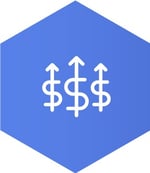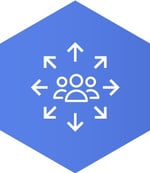Before choosing your pricing strategy, you need to know everything there is to know about your product. But not just that. You also need to understand who you’re catering for, how they buy and why, as well as the value they get from your product. Only then can you begin considering which strategy to follow.
For small retailers who don’t have the same buying power or influence as a larger retailer, choosing the right pricing strategy becomes even more important. It can mean the difference between turning a healthy profit, just breaking even, or losing money.
That said, below we’ve broken down a few key pricing strategies that you can consider as a small retailer.

Price bundling
As a strategy, price bundling is relatively easy to understand. You’re essentially bundling two or more products together and offering them at a set price. For a smaller retailer, it’s an excellent opportunity to offer value in the form of volume.
As for the contents of your bundle, it is usually made up of a big ticket product together with one or more complementary items depending on the deal. The products don’t have to be from the same category, though. For example, you could consider mixing the bundle. Known as cross-industry bundling, you can offer products from more than one company in a single offer.
There is also the premium bundle offer, a strategy where the bundled price is higher than the total of the products that you include. And then you have the new product bundle. With this last strategy, you can bundle a high-selling product together with a new product as a way of introducing the new product into the market.
If you’re a smaller retailer, this strategy can work best when cross-merchandising items from different categories so that your customers shop your entire space.
Advantages
- Your shoppers are given an impression of value.
- Your slower sellers can be replaced with faster sellers.
- Your profits are increased if the correct items are bundled together.
Disadvantages
- Some of your customers may not want the bundled items.
- Your pricing must be well-considered to prevent a loss margin or reduced profitability.
- Your customers could potentially see your offer as inferior.

Leader Pricing
Also known as a Loss Leader strategy, this form of pricing is aimed at luring your customers in with a product they want at a lower price than your competitors. In short, you’re placing a product below the wholesale cost to your business in the hopes of encouraging customers to buy it.
Then, while your customers are in your store looking to buy that product, they’ll have an opportunity to buy additional products from you, which is how you would really make your money. This tactic is also meant to increase your traffic flow.
In the context of a small retailer, it’s certainly a huge gamble. That doesn’t mean that you can’t or shouldn’t attempt this strategy. You can. Just ensure you understand your customer’s needs intimately if you do decide on using this tactic.
Why? It’s because of this fact: if you have a competitor who is larger than you and who makes use of the same strategy, this strategy could work against you.
Of course, there has been some controversy around this strategy. In the United States, several states have placed restricted laws around it. Meanwhile, in many European markets, it has been banned as a practice as it gives an unfair advantage to certain retailers. That is because it can get uncomfortably close to predatory pricing, a topic we mentioned in a previous article on pricing strategies.
Advantages
- It can increase your footfall due to the saving lure.
- It can increase purchases across categories.
- It can increase shopper loyalty.
- It can clear your inventory fast.
Disadvantages
- Your advertising cost may be high.
- You can experience a loss in margin on the items positioned as loss leaders.
- You can experience out of stocks if you don’t plan properly.
- Your shoppers might take advantage of you, only cherry picking your loss leaders.

Odd pricing
Also known as odd-even pricing, fractional pricing and charm prices, an odd pricing strategy is a psychological tactic meant to get your customers to buy more. In most cases, it works since it focuses on the belief that price ranges that are ‘odd’ are more appealing to buyers than those prices that are ‘even’.
These ‘odd’ prices are those that would end just below a round number such as 9.95 or 19.99 while your ‘even’ prices would be 10.00 or 20.00 respectively.
Let’s take R299.95 and R300.00 as examples. While both are similar in cost – there is no discount whatsoever – you’d most likely want to choose the first number. That is because of the psychological effect of that .95 at the end versus the .00. With the odd pricing, you have perceived it as cheaper or better priced even when it is not.
As a smaller retailer, it’s a great pricing strategy since it can show your customers that you can provide value. Similar to pricing bundling strategy, though, it is used by larger retailers, so you do need to be careful when implementing this.
Advantages
- It conveys a sense of better value to your customers.
- It encourages larger purchases as your customers feel like they’re getting more for their money.
- It encourages impulse buys.
- You can target a wider range of customers.
Disadvantages
- Your customers are aware of this tactic and could thus disregard it.
- It can make it difficult and inconvenient for your staff to ring up purchases and calculate the amount due.
Conclusion
Finding the right price and choosing a pricing strategy as a small retailer will never be an easy or simple undertaking. But that doesn’t mean it’s not worth it. Your price will influence the way your customer perceives you. Your price will also help them decide if they want to do business with you or not. Knowing this, it’s worth spending time on getting it just right.


